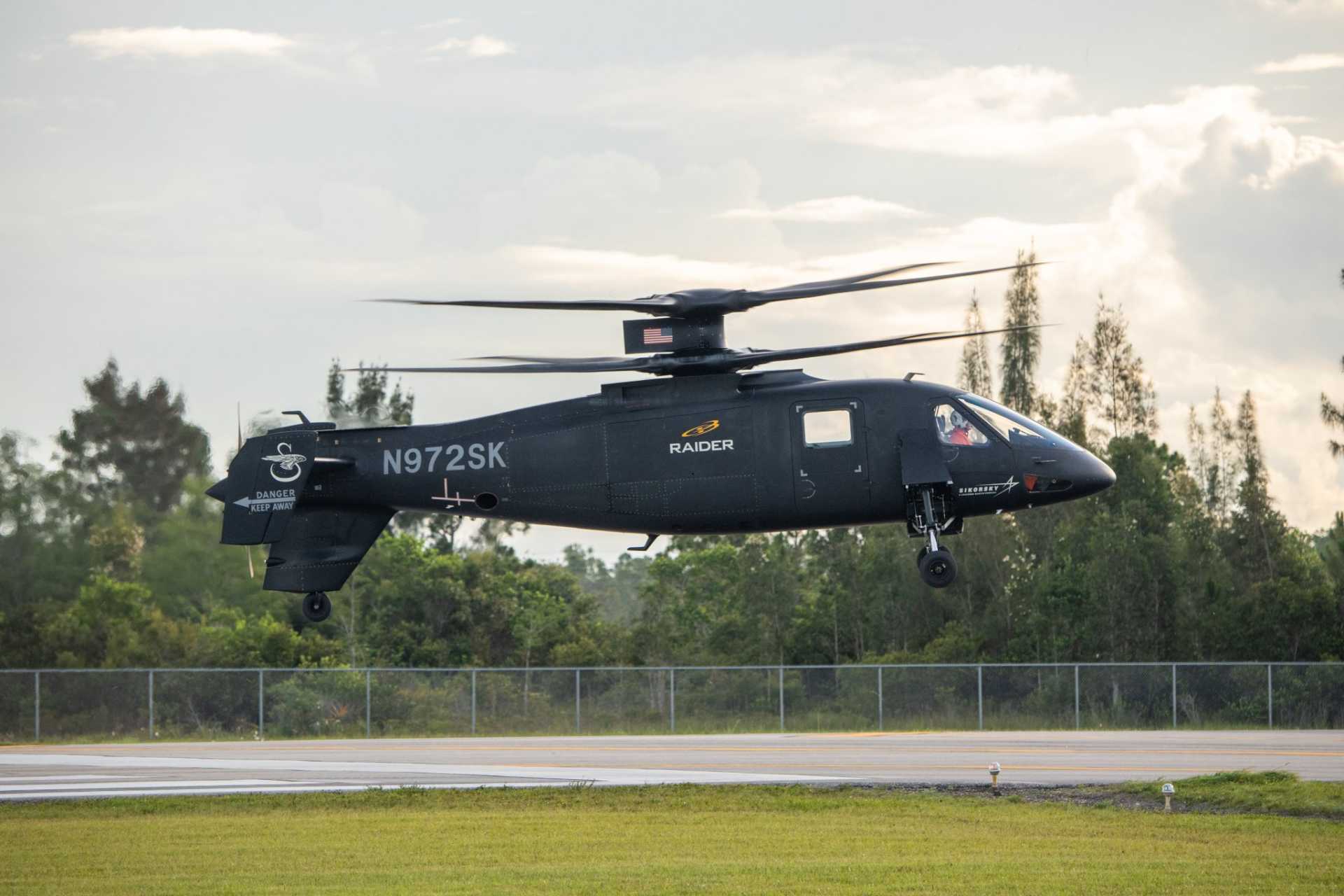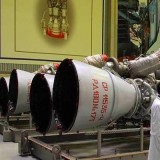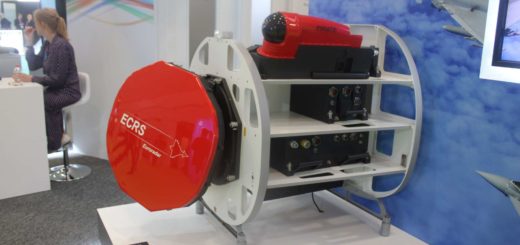US company Sikorsky turns to export market for its S-97 Raider attack helicopter after US program cancellations

{loadposition bannertop}
{loadposition sidebarpub}
As reported by RID on March 25, 2025, Sikorsky held a demonstration of its S-97 Raider attack helicopter at the Development Flight Center in West Palm Beach, Florida, on February 11 and 12, 2025. The event was organized for an international audience, with the objective of promoting the X2 platform for NATO’s Next Generation Rotorcraft Capability (NGRC) program and South Korea’s experimental utility helicopter project (XUH), both of which focus on acquiring a 14–15 ton class fast multirole rotorcraft. The company is seeking international buyers following the U.S. Army’s cancellation of the Future Attack Reconnaissance Aircraft (FARA) program and its earlier decision to award the Future Long Range Assault Aircraft (FLRAA) contract to a competing platform.Follow Army Recognition on Google News at this link
Powered by a General Electric YT706 turboshaft engine, the same model used in the MH-60M Black Hawk, the S-97 Raider attack helicopter has a top speed of 440 km/h. (Picture source: Sikorsky)
The event included representatives from NATO nations and non-NATO states. Attendees included military officials from the United States, Saudi Arabia, South Korea, Italy, Germany, the United Kingdom, Romania, and Switzerland. Among them were personnel from the Italian Air Force, Army, and Navy, including pilots from the Reparto Sperimentale di Volo and the Centro Sperimentale Aeromarittimo. Journalists from Italy, South Korea, Germany, and the United Kingdom were also present, alongside representatives of companies that form part of Sikorsky’s industrial team for the NATO NGRC program.
On the first day, the S-97 Raider was positioned inside a flight-line hangar, accompanied by a wooden cabin mock-up based on the SB-1 Defiant’s configuration, representing a potential medium assault helicopter. Attendees were briefed on Sikorsky’s Digital Twin capability for its helicopter lines, and had access to a mobile flight simulator housed in a trailer. During the simulator session, participants piloted a virtual version of the Raider and received a technical briefing on the X2 compound rotorcraft technology from Lockheed Martin’s Director of Future Vertical Lift International, Luigi Piantadosi.
The second day focused on the flight demonstration of the S-97 Raider. The flight occurred in the morning to avoid typical afternoon weather fluctuations in Florida, including increasing wind conditions. Sikorsky experimental pilot Bill Fell flew the aircraft during the live demonstration.
The S-97 Raider is a high-speed scout and attack helicopter developed from the Sikorsky X2, which first flew in 2008 and was retired in 2011. The S-97 first flew in 2015 and features rigid coaxial rotors and a variable-pitch pusher propeller. It is powered by a General Electric YT706 turboshaft engine, the same model used in the MH-60M Black Hawk. The aircraft is designed for a crew of up to two and can carry six additional personnel. It has a maximum takeoff weight of approximately 4,990 kg (11,000 lb), cruise speed of 410 km/h with external weapons, and endurance of 2 hours 40 minutes. Armament options include a .50 caliber machine gun and 7-shot rocket pods.
The live flight demonstrated several features of the X2 technology. These included sideward flight at speeds between 55 and 75 km/h using torque differential between the coaxial rotors for yaw control, and level-body acceleration during which the aircraft transitions from hover to forward flight with assistance from the pusher propeller. At 185 km/h, 90 percent of engine power is transferred to the propeller while 10 percent remains with the rotors. During testing, the S-97 flew without the propeller after it was temporarily removed due to an issue, reaching 280 km/h.
The aircraft also performed high-speed turns using reverse thrust to tighten the turn radius at 3g and 60° bank angle. It maintained cruise flight at 370 km/h at low altitude, with the pilot indicating that roll response at those speeds allowed maneuvering below treetop level. During a dive maneuver at 20–30° nose-down, the pusher propeller provided negative pitch to stabilize descent speed. Level-body deceleration was demonstrated, which allows the aircraft to slow without raising the nose, preserving forward visibility in complex or unfamiliar landing zones.
The X2 technology, developed by Sikorsky and previously demonstrated with the X2 aircraft, incorporates rigid coaxial rotors spaced approximately two feet apart, a pusher propeller, and fly-by-wire controls. (Picture source: Wikimedia/Valder137)
Other capabilities shown included hovering with nose-up or nose-down attitudes by adjusting propeller pitch, and the ability to operate in a reduced-acoustic mode. By declutching the propeller and lowering rotor RPMs, Sikorsky demonstrated reduced noise emissions. Attendees noted the difference in acoustic footprint compared to a conventional helicopter at similar distances. While walking around the static S-97 on the ramp approximately 50 meters from a departing S-92, conversation was significantly disrupted by the S-92’s noise. When the S-97 hovered at the same distance, the sound impact was comparatively lower and allowed verbal communication to continue.
The X2 technology, developed by Sikorsky and previously demonstrated with the X2 aircraft, incorporates rigid coaxial rotors spaced approximately two feet apart, a pusher propeller, and fly-by-wire controls. The X2 test aircraft exceeded 460 km/h in level flight and reached 480 km/h in a shallow dive. The S-97 inherits this configuration and is intended as a basis for the SB-1 Defiant, developed jointly by Sikorsky and Boeing for the Joint Multi-Role Technology Demonstrator (JMR TD), a precursor to the Future Vertical Lift (FVL) program.
Sikorsky has constructed two S-97 prototypes, funded through a $200 million investment shared between the company and its 54 suppliers, with Sikorsky contributing $150 million. The production model has a target cost of $15 million per unit. Although the U.S. Army cancelled the AAS program in 2013 and opted to replace the OH-58 Kiowa fleet with active component AH-64 Apaches, Sikorsky has continued to promote the Raider for other potential roles, including as a replacement for the MH-6M Little Bird used by U.S. Special Operations Command.
As of the February 2025 demonstration, the S-97 remains in development and has not been procured by the U.S. military. Interest has been expressed by foreign militaries, but export approval would require a funded production development effort. Sikorsky has proposed the Raider as FVL-CS1 in the Future Vertical Lift initiative, representing a potential light scout helicopter.

{loadposition bannertop}
{loadposition sidebarpub}
As reported by RID on March 25, 2025, Sikorsky held a demonstration of its S-97 Raider attack helicopter at the Development Flight Center in West Palm Beach, Florida, on February 11 and 12, 2025. The event was organized for an international audience, with the objective of promoting the X2 platform for NATO’s Next Generation Rotorcraft Capability (NGRC) program and South Korea’s experimental utility helicopter project (XUH), both of which focus on acquiring a 14–15 ton class fast multirole rotorcraft. The company is seeking international buyers following the U.S. Army’s cancellation of the Future Attack Reconnaissance Aircraft (FARA) program and its earlier decision to award the Future Long Range Assault Aircraft (FLRAA) contract to a competing platform.
Follow Army Recognition on Google News at this link
Powered by a General Electric YT706 turboshaft engine, the same model used in the MH-60M Black Hawk, the S-97 Raider attack helicopter has a top speed of 440 km/h. (Picture source: Sikorsky)
The event included representatives from NATO nations and non-NATO states. Attendees included military officials from the United States, Saudi Arabia, South Korea, Italy, Germany, the United Kingdom, Romania, and Switzerland. Among them were personnel from the Italian Air Force, Army, and Navy, including pilots from the Reparto Sperimentale di Volo and the Centro Sperimentale Aeromarittimo. Journalists from Italy, South Korea, Germany, and the United Kingdom were also present, alongside representatives of companies that form part of Sikorsky’s industrial team for the NATO NGRC program.
On the first day, the S-97 Raider was positioned inside a flight-line hangar, accompanied by a wooden cabin mock-up based on the SB-1 Defiant’s configuration, representing a potential medium assault helicopter. Attendees were briefed on Sikorsky’s Digital Twin capability for its helicopter lines, and had access to a mobile flight simulator housed in a trailer. During the simulator session, participants piloted a virtual version of the Raider and received a technical briefing on the X2 compound rotorcraft technology from Lockheed Martin’s Director of Future Vertical Lift International, Luigi Piantadosi.
The second day focused on the flight demonstration of the S-97 Raider. The flight occurred in the morning to avoid typical afternoon weather fluctuations in Florida, including increasing wind conditions. Sikorsky experimental pilot Bill Fell flew the aircraft during the live demonstration.
The S-97 Raider is a high-speed scout and attack helicopter developed from the Sikorsky X2, which first flew in 2008 and was retired in 2011. The S-97 first flew in 2015 and features rigid coaxial rotors and a variable-pitch pusher propeller. It is powered by a General Electric YT706 turboshaft engine, the same model used in the MH-60M Black Hawk. The aircraft is designed for a crew of up to two and can carry six additional personnel. It has a maximum takeoff weight of approximately 4,990 kg (11,000 lb), cruise speed of 410 km/h with external weapons, and endurance of 2 hours 40 minutes. Armament options include a .50 caliber machine gun and 7-shot rocket pods.
The live flight demonstrated several features of the X2 technology. These included sideward flight at speeds between 55 and 75 km/h using torque differential between the coaxial rotors for yaw control, and level-body acceleration during which the aircraft transitions from hover to forward flight with assistance from the pusher propeller. At 185 km/h, 90 percent of engine power is transferred to the propeller while 10 percent remains with the rotors. During testing, the S-97 flew without the propeller after it was temporarily removed due to an issue, reaching 280 km/h.
The aircraft also performed high-speed turns using reverse thrust to tighten the turn radius at 3g and 60° bank angle. It maintained cruise flight at 370 km/h at low altitude, with the pilot indicating that roll response at those speeds allowed maneuvering below treetop level. During a dive maneuver at 20–30° nose-down, the pusher propeller provided negative pitch to stabilize descent speed. Level-body deceleration was demonstrated, which allows the aircraft to slow without raising the nose, preserving forward visibility in complex or unfamiliar landing zones.

The X2 technology, developed by Sikorsky and previously demonstrated with the X2 aircraft, incorporates rigid coaxial rotors spaced approximately two feet apart, a pusher propeller, and fly-by-wire controls. (Picture source: Wikimedia/Valder137)
Other capabilities shown included hovering with nose-up or nose-down attitudes by adjusting propeller pitch, and the ability to operate in a reduced-acoustic mode. By declutching the propeller and lowering rotor RPMs, Sikorsky demonstrated reduced noise emissions. Attendees noted the difference in acoustic footprint compared to a conventional helicopter at similar distances. While walking around the static S-97 on the ramp approximately 50 meters from a departing S-92, conversation was significantly disrupted by the S-92’s noise. When the S-97 hovered at the same distance, the sound impact was comparatively lower and allowed verbal communication to continue.
The X2 technology, developed by Sikorsky and previously demonstrated with the X2 aircraft, incorporates rigid coaxial rotors spaced approximately two feet apart, a pusher propeller, and fly-by-wire controls. The X2 test aircraft exceeded 460 km/h in level flight and reached 480 km/h in a shallow dive. The S-97 inherits this configuration and is intended as a basis for the SB-1 Defiant, developed jointly by Sikorsky and Boeing for the Joint Multi-Role Technology Demonstrator (JMR TD), a precursor to the Future Vertical Lift (FVL) program.
Sikorsky has constructed two S-97 prototypes, funded through a $200 million investment shared between the company and its 54 suppliers, with Sikorsky contributing $150 million. The production model has a target cost of $15 million per unit. Although the U.S. Army cancelled the AAS program in 2013 and opted to replace the OH-58 Kiowa fleet with active component AH-64 Apaches, Sikorsky has continued to promote the Raider for other potential roles, including as a replacement for the MH-6M Little Bird used by U.S. Special Operations Command.
As of the February 2025 demonstration, the S-97 remains in development and has not been procured by the U.S. military. Interest has been expressed by foreign militaries, but export approval would require a funded production development effort. Sikorsky has proposed the Raider as FVL-CS1 in the Future Vertical Lift initiative, representing a potential light scout helicopter.






